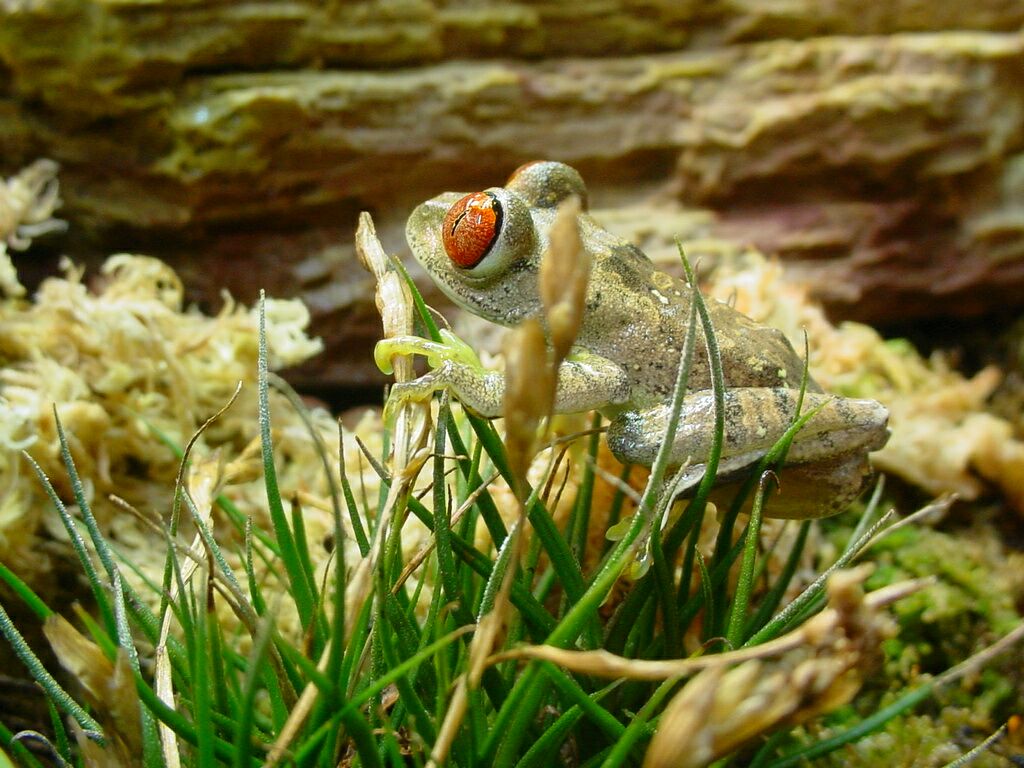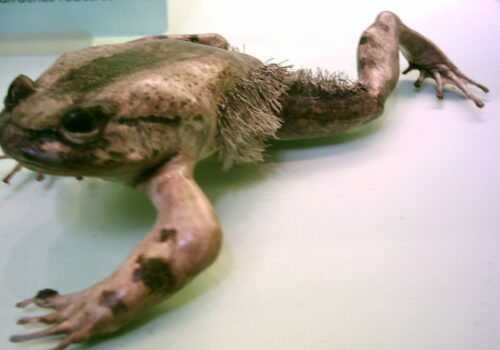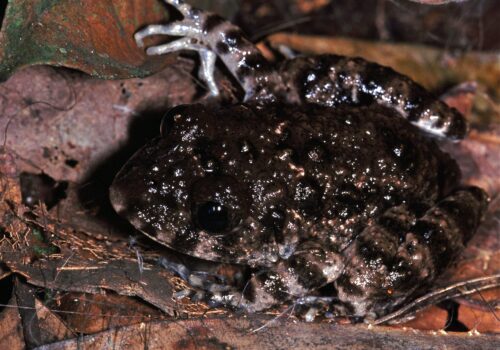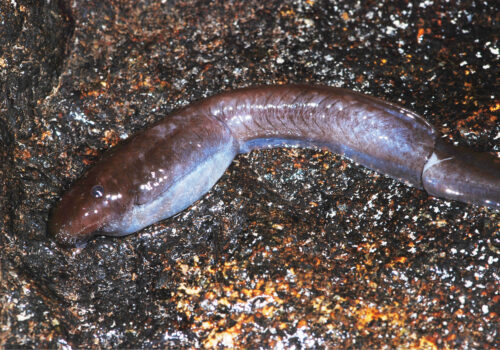- Discovering Leptopelis parkeri: Exploring the Unique Life of Parker's Tree Frog
- Taxonomy and Classification: Understanding Parker's Tree Frog’s Family Tree
- Natural Habitat: The Lush Cloud Forests of Tanzania
- Physical Characteristics: Emerald Jewels of the Canopy
- Behavior and Life Cycle: Melodic Calls, Agile Predators, and Caring Parents
- Ecological Role: Guardians of Forest Health
- Threats and Conservation Status: Protecting a Rare Amphibian Icon
- Cultural and Scientific Significance: More Than Just a Forest Dweller
- Conclusion: Preserving Tanzania’s Emerald Chorus
Discovering Leptopelis parkeri: Exploring the Unique Life of Parker’s Tree Frog#
Within the lush forests and vibrant highlands of Tanzania dwells an elusive master of camouflage and melody: Parker’s Tree Frog, scientifically named Leptopelis parkeri. Named in honor of renowned herpetologist Hampton Wildman Parker, this extraordinary frog may escape immediate notice at first glance, blending seamlessly into moss-covered branches and verdant foliage. Yet, once it makes its presence known through a captivating chorus of calls beneath the moonlit canopies, even the most casual observer cannot help but be enthralled. With a shimmering emerald hue and intricate markings artfully fashioned by evolution, this remarkable amphibian becomes a fitting ambassador for East Africa’s vital montane forest ecosystems.
Despite their modest size, often measuring just a few centimeters in length, Parker’s Tree Frogs serve as an integral component of their delicate ecological communities. More than just charming tree-dwelling amphibians, these frogs represent crucial indicators for habitat health, their very existence intimately intertwined with the well-being of vast swathes of Tanzanian wilderness. Through this deep-dive, we explore the fascinating biology, unique behaviors, ecological significance, and conservation challenges facing Leptopelis parkeri, encouraging readers to better understand—and ultimately appreciate—this beautiful yet vulnerable species.
Taxonomy and Classification: Understanding Parker’s Tree Frog’s Family Tree#
Leptopelis parkeri finds its place within the extensive family Arthroleptidae, which encompasses a diverse array of tree frogs spread primarily across Sub-Saharan Africa. Nestled within this family, the genus Leptopelis comprises around 50 recognized species, showy in their variety yet often secretive in behavior. Closely related species include the widely studied Leptopelis vermiculatus or Peacock Tree Frog, another vibrant forest inhabitant with strikingly patterned skin.
The attribution of the species name “parkeri” commemorates the influential British herpetologist Hampton Wildman Parker, recognizing his significant contributions to amphibian classification and natural history. First described scientifically by noted herpetologist Alan Channing in 2002, Leptopelis parkeri quickly garnered attention among conservationists and naturalists alike due to its unique adaptations and highly restricted distribution.
Natural Habitat: The Lush Cloud Forests of Tanzania#
Geographic Range and Distribution#
Exclusively native to Tanzania, Parker’s Tree Frog inhabits a narrow altitudinal band within the Eastern Arc Mountains, particularly in the Usambara and Uluguru mountain ranges. These mountains, cloaked in dense cloud forests and perpetually draped in mist, offer the perfect sanctuary for this elusive frog. The relatively cool temperatures and high humidity of these montane rainforests create optimal conditions for amphibian life, supporting a unique assemblage of biodiversity seen nowhere else on Earth.
Specific Habitat Preferences#
Leptopelis parkeri dwells predominantly among mossy branches, leafy shrubs, and in close proximity to clear mountain streams, often inhabiting elevations between approximately 900 and 2,000 meters. The forest canopy, dripping with water vapor, serves as cover from predators and adverse weather, providing essential moisture to keep the frogs’ delicate skin hydrated and healthy. The moss-laden branches upon which it resides not only conceal this small amphibian from the keen eyes of predators but also offer access to ample prey insects—such habitat becomes an invaluable resource, integral to their survival.
These frogs make efficient use of the vegetation strata, often observed on the lower foliage and understory, blending perfectly with the forest environment while avoiding competition with other amphibians occupying different niches.
Physical Characteristics: Emerald Jewels of the Canopy#
Parker’s Tree Frogs are modest in size, averaging around 30 to 40 millimeters in adult length, yet boast distinctive physical traits and adaptations. Their skin, striking yet subtly patterned, ranges from vivid greens to earthy browns and even mossy greys—an adaptable visual camouflage phased according to their immediate environment. Their dorsal surface is typically marked with irregular darker patterns, often accompanied by a blend of delicate white specks, making each individual frog uniquely identifiable.
Their large eyes positioned prominently atop heads furnish binocular-like vision—a remarkable adaptation ideal for hunting prey within the complex foliage. Furthermore, their toe pads are well-equipped with sticky mucous, affording them the ability to comfortably cling to wet, slippery vegetation and navigate the intricate branches of their montane rainforest homes with ease.
Behavior and Life Cycle: Melodic Calls, Agile Predators, and Caring Parents#
Feeding Habits and Hunting Strategies#
Leptopelis parkeri is an opportunistic insectivore, feeding primarily on ants, beetles, moths, and other small insects encountered among the leaves and branches. Equipped with acute eyesight and finely-tuned reflexes, these agile hunters swiftly ambush their prey, relying on surprise, stealth, and precise execution. Their relatively sedentary hunting style, coupled with slow and calculated movements, enhances their effectiveness—allowing them to blend unnoticed into their environment as they quietly await unsuspecting insect prey passing by.
Mating Calls and Reproductive Behavior#
As is common among tree frogs, males of Leptopelis parkeri utilize a diverse repertoire of vocalizations during the mating season. Late at night, the high-pitched but melodious calls ring through the cloud forests, a nocturnal symphony performed to attract mates and signal territory to rivals. Male frogs congregate in chorus groups near water sources such as small streams, ephemeral pools, or water-filled arboreal cavities, harmonizing their calls to amplify their presence and attract females for breeding.
Egg-laying and Tadpole Development#
Female Parker’s Tree Frogs deposit clusters of gelatinous eggs near water bodies, taking great care to attach the egg masses onto leaves, branches, or other submerged or semi-submerged structures, thus providing their offspring optimal protection from predators. Upon hatching, tadpoles drop into the water where feeding and development take place. The tadpoles themselves are adapted to thrive in swiftly flowing or quiet montane streams, consuming a variety of detritus and microorganisms. Amazingly, they grow rapidly, undergoing metamorphosis into froglets within weeks to months—depending on the temperature and localized resources available.
Ecological Role: Guardians of Forest Health#
Parker’s Tree Frog’s role in their ecosystem extends far beyond their immediate survival and reproductive strategies. As insectivores, they help regulate insect populations within their montane forests, contributing significantly to the delicate balance of food webs encompassing many other animal and plant species. Predation by snakes, birds, and small mammals assures their position as valuable prey, making them key components of ecological flows within their habitat.
Perhaps their most profound ecological contribution is their role as bioindicators: amphibians are highly sensitive to environmental changes and pollutants. Sudden changes in their populations, health, or reproductive success frequently highlight wider environmental conditions, delivering researchers and conservationists critical information for understanding ecosystem health.
Threats and Conservation Status: Protecting a Rare Amphibian Icon#
Presently listed by the International Union for Conservation of Nature (IUCN) as vulnerable, Leptopelis parkeri faces several potential threats that warrant urgent attention. Chief among these is habitat fragmentation and forest degradation caused by expanding agriculture, logging activities, and human settlement. Climate change, bringing altered rainfall patterns and increasing temperatures, poses a significant threat by pushing the delicate montane ecosystem beyond its adaptive limits. This disruption accelerates shifts in vegetation cover, reducing habitat suitability and protection against predation.
Disease, particularly chytridiomycosis caused by the fungus Batrachochytrium dendrobatidis, also looms as a severe threat. Amphibian fungal pathogens have ravaged frog populations worldwide, and though current data specific to L. parkeri remain limited, the threat would warrant preventive conservation measures.
Cultural and Scientific Significance: More Than Just a Forest Dweller#
Although Parker’s Tree Frog lacks extensive direct cultural symbolism, it represents a vital part of Tanzania’s unique biological heritage—a living testament to evolutionary diversity and adaptation. Scientifically, this species serves as an exceptional model organism for exploring evolutionary biology, habitat specialization, and climate change impacts specific to montane environments. It highlights the critical interplay between animal species and environmental factors, emphasizing the importance of protecting critical habitat areas.
Conclusion: Preserving Tanzania’s Emerald Chorus#
Exploring the life and ecology of Leptopelis parkeri opens a window into the rich biodiversity supported by Tanzania’s montane cloud forests—an ecosystem both precious and precariously balanced. Conservation action directed towards protecting these amphibians ultimately safeguards a greater community of life, influencing broader environmental health and resilience. This remarkable frog deserves ongoing attention, research, and advocacy, and every individual can play a pivotal role in safeguarding the best interests—both ecological and ethical—of these invaluable forest guardians.











